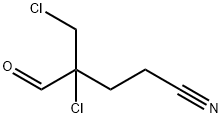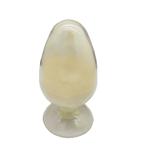Description
2-Chloro-5-chloromethylpyridine is used for the synthesis of various pharmaceutical compounds. It can also be used for the synthesis of new neonicotinoid compounds
1, having insecticidal activity. It is the raw material of pesticide products such as imidacloprid, acetamiprid as well as bactericide and herbicide
2,3.
Structure
2-Chloro-5-(chloromethyl)pyridine, C6H5Cl2N, is almost planar, with an r.m.s. deviation of 0.0146 Å for all atoms except for the 5-choloromethyl Cl atom. The offset Cl atom lies above this plane with a Cl—C—C angle of 111.11 (17)°. In the crystal, molecules are connected via intermolecular C—H⋯N hydrogen bonds, forming dimers. The crystals were obtained by dissolving 2-Chloro-5-(chloromethyl)pyridine (0.2 g, 1.2 mmol) in ethanol (25 ml) and evaporating the solvent slowly at room temperature for about 5 d[1].

Sources
- https://www.alfa.com/en/catalog/L19284/
- https://www.trc-canada.com/product-detail/?C364715
- www.szqhbio.com/wap_news_detailen/id/1.htm
Chemical Properties
beige moist crystals
Uses
2-Chloro-5-(chloromethyl)pyridine is used for the synthesis of various pharmaceutical compounds. It can also be used for the synthesis of new neonicotinoid compounds.
References
[1] Zhi-Qiang Feng. “2-Chloro-5-(chloro-meth-yl)pyridine.” Acta crystallographica. Section E, Structure reports online 67 Pt 2 (2011): o366.







